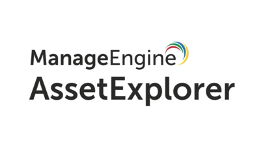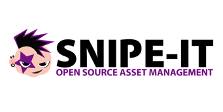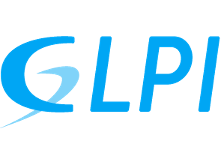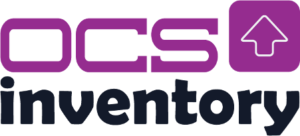Free Inventory Tools – Market Guide
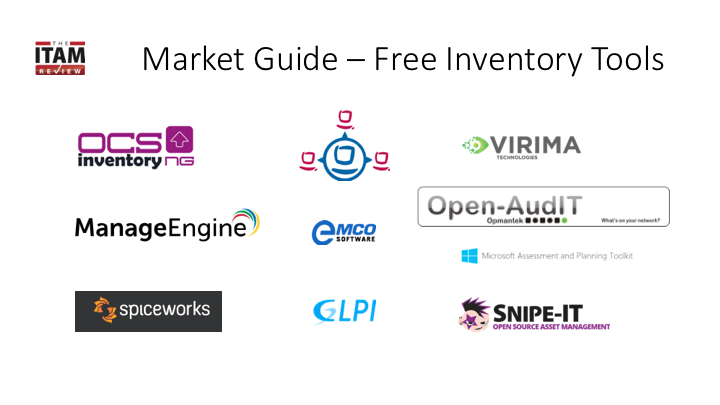 Overview
Overview
This Market Guide provides an overview of vendors and products providing free Inventory Tools. The purpose is to provide you with a long-list of vendors to consider if you are in the market for such a toolset. It is non-exhaustive and is based on original research from The ITAM Review. Inclusion on the list does not mean endorsement, and no vendor has received special treatment or priority for their listing. This Market Guide is free of charge and vendors did not pay for a listing. If you are a vendor not included in the list we will be happy to include you in a future edition.
Market Definition & Analysis
The market under analysis is the free Inventory Tools market. This market is focussed on providing organisations with one of the key foundations of ITAM – hardware & software inventory. Free or “freemium” inventory tools can be useful in building a business case for an ITAM program. They may also be useful in response to audit in the event you don’t already have a tool deployed.
Key Findings
The need for inventory is growing to meet the demands of IT Asset Management, Service Management, Procurement, Legal, Privacy, and Security teams. As a result, we find vendors provide inventory reports to their customers from a number of starting points (e.g. CMDB, SIEM) and with differing intentions but ultimately ending up with the same outcome: a list of assets and data fields about those assets.
Recommendations
In selecting a tool in this space specific consideration should be given to the following areas. These recommendations may not be met by a single tool, particularly at the free end of the market, but if a tool is free to deploy it may be possible to deploy more than one to get a wider picture of your estate.
- Completeness
An inventory tool should be able to gather normalised data about as much of your IT infrastructure as possible – On Premises, Cloud, SaaS, Mobile, Windows, OSX, Linux, and so on. You may need more than one tool to achieve this.
- Flexibility
A tool should be configurable to meet changing requirements, and may require customisation to meet your infrastructure or regulatory requirements.
- Minimal footprint
If multiple tools are required it is desirable that each tool has a minimal footprint in terms of agent requirements and scanning engine compute requirements. Many of the tools in this guide use common protocols and methods to deliver agentless discovery.
Inclusion Criteria
In compiling this list we have attempted to include vendors from across the marketplace in terms of size, geography, and product capability. If, as a vendor, you are not listed please contact the author for inclusion in a future edition of the guide.
Product Requirements
It is recommended that the product selected is able to deliver the benefits:
1. Deployment flexibility
Achieving and maintaining inventory completeness is challenging. Increasingly in response to regulatory and security requirements IT networks are becoming segregated and heavily permissioned. An inventory tool needs to be able to work with these constraints. Multiple approaches to inventory are required – for example agent-based, agentless, ability to consume & reconcile inventory from other sources.
2. Reconciliation
Building on the above an inventory tool should be able to identify unique assets from disparate data sources and reconcile the data about that asset into a single record. Each source may gather differing asset data – for example usage data won’t include hardware data and software inventory won’t capture user inventory or location data. Whilst this guide is concerned with software inventory, it isn’t possible to accurately inventory software without understanding hardware, users, and usage. Where reconciliation within the tool isn’t possible you may be required to build custom tooling yourself – for example your own inventory database to receive data from multiple toolsets.
3. Known Unknowns
A facility should be provided to highlight assets for which no inventory has been received. This enables an IT Asset Manager to know what they don’t know, and chase down inventory for those missing assets.
4. Asset classes
Five years ago, it was still possible for a software inventory tool to simply discover the software on physical or virtual hardware without consideration for other types of asset class. With the move towards user-based & cloud computing an inventory tool needs to record who used those assets, and when. This is vital for most use cases of inventory data – software usage, record-keeping for IT Security, proof of processing for Privacy requirements, and so on.
Vendors
Introduction
This section provides an overview of each company, with data from a variety of sources.
Each listing will outline the discovery method used. Also stated is how the product is deployed (cloud-only, on-prem, both) and whether it is part of a wider IT Management toolset.

Spice-works
Spiceworks offer a range of IT Management tools including Software Inventory. Their product inventories Windows & Mac computers and discovers a wider variety of devices via agentless network devices. Integration is possible with their Helpdesk ticketing application and other tools such . The service is available either on-premises or in the Cloud. There are some functionality differences between these two deployment methods.
Key differentiators: Rapid deployment, integration with other tools, extensibility.
Lansweeper
Lansweeper is a well-established product, having been in the market for 15 years. It is permanently free for use for up to 100 devices. Lansweeper makes use of both Agentless & agent-based discovery and will discover a wide variety of assets on your network including Windows, Linux, and OSX devices. For larger estates there is a fully-supported 30-day trial.
Key Differentiators:
Solely focused on the Inventory market, strong support and customer service team.
ManageEngine Asset Explorer
ManageEngine provide a number of device-limited IT Management applications suitable for small deployments. Asset Explorer is able to scan the full range of Operating Systems and both physical and virtual assets. It is deployed as an on-premises application.
Key differentiators: Easy configuration, drill-down dashboards, integration with other systems such as Helpdesk & CMDB.

Microsoft MAP Toolkit
https://www.microsoft.com/en-gb/download/details.aspx?id=7826
Microsoft Assessment & Planning (MAP) Toolkit is primarily used by Windows Infrastructure specialists to plan upgrades and migrations. However, it is a fully-functional cross-platform inventory solution able to report on a wide variety of computing devices and software. Whilst it excels at managing and planning Microsoft’s own software stack – particularly HyperV, Exchange, and SQL Server – it is also possible to ingest data from other systems such as VMWare. It is deployable on-premises only, requiring a Windows desktop or server.
Key Differentiators: Gather statistics on Microsoft CAL usage, Active Directory Integrations, vendor-supplied tool
Virima Discovery
https://www.virima.com/solutions/discovery/
Virima Discovery is part of Virima’s wider ITSM & ITAM Suite. It is delivered via the cloud and uses agentless discovery. The free version is ideal for small teams getting started with inventory & discovery, because access to the data is limited by end users of the app itself, not the number of assets. For a one-person SAM team this may be all you need to inventory and optimise your entire estate
Key Differentiators: Unlimited asset discovery including SaaS Apps, Agentless

Emco Network Scanner
https://emcosoftware.com/network-software-scanner/requirements
Emco Network Scanner is a freeware software discovery tool for Windows environments (servers and laptops/desktops). There are no usage restrictions. Discovery is agentless via NetBIOS, Remote Registry, and Computer Browser services.
Key Differentiators: Windows only, familiar MMC-style interface for admins.

Open-AudIT Community Edition
https://www.open-audit.org/downloads.php
Open-AudIT is a modular, script-based, and highly configurable tool for true agentless scanning of a network. It makes the bold claim that if an asset is connected to your network, it will find it. Community Edition is free for commercial use and covers basic inventory and discovery needs. It is deployed on-premises only and is available for self-install or as a pre-built VM.
Key Differentiators: Extensible & configurable, completely agentless, pre-built VM

Snipe-IT
https://snipeitapp.com/download
Snipe-IT is a fully open-source asset management system based around agentless discovery. It can be self-hosted on any web server or cloud-hosted with Snipe-IT (for a monthly fee). There are no device restrictions.
Key differentiators: Strong for Hardware Asset Management, Source code available, Server rack visualisations

GLPI
https://glpi-project.org/features/
GLPI provide a full open-source IT Management Suite, including software asset management and inventory/discovery. There are also modules for Service Desk and IT Financial Management
Key Differentiators: Online demo available, strong Datacenter visualisation tools, integration with other toolsets

OCS-Inventory NG
https://www.ocsinventory-ng.org/en/
OCS-Inventory NG is an on-site inventory and discovery tool providing coverage for Windows, Linux, OSX, Unix, and, uniquely in this market guide, Android. Integrations are provided to GLPI which make an end-to-end hardware/software management process possible.
Key Differentiators: Integration source for a variety of other Open Source IT Management solutions
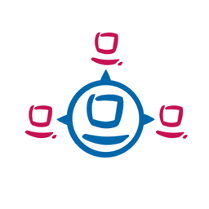
OPSI
OPSI provides inventory for Windows & Linux machines as part of a wider suite of PC/Server management tools. OPSI is provided as an on-premises deployment, pre-built as a VM for use with VMWare or VirtualBox. The application is well-supported, current and open-source. The core product can be enhanced with plugins, some of which are chargeable.
Key Differentiators: Easy deployment via pre-built VM, extensible and scalable with plugins
Directory Tools
Basic discovery of computers and other devices (but not the software running on them) can be achieved by querying Active Directory (for Windows-based networks) or LDAP repositories. For LDAP the recommended tool is Softerra LDAP Browser. This tool provides read-only access to directories and is therefore completely safe to use. Whilst Softerra can also be used to manage Active Directory there are a number of free tools dedicated to that task. Your AD team are likely to already have something for this. AD contains vital information for SAM professionals, most notably enabling you to find inactive computers and users, which can aid in calculating license consumption. Furthermore, because AD is an authoritative data source for Windows Servers, Computers, and Users it can be used to uncover assets being missed by other discovery and inventory tools.
Conclusion
Many of these tools are by their nature complex to implement and therefore will require you to have technical knowledge and privileged access to your environment. Of them all Spiceworks is the easiest to use for a non-technical user but you will still need assistance from your IT Infrastructure colleagues. However, all these tools will discover your environment to an acceptable level in order to start you on your ITAM journey.



